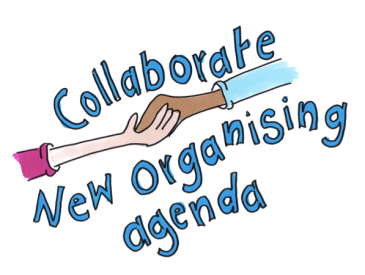 An Interview with Dame Jackie Daniel, Chief Executive of University Hospitals of Morecambe Bay NHS Foundation Trust
An Interview with Dame Jackie Daniel, Chief Executive of University Hospitals of Morecambe Bay NHS Foundation Trust
The Darzi Fellows from Kent Surrey and Sussex (KSS) recently interviewed people who were leading Vanguards nationally and locally, and went to visit a site. As I was listening I was struck by how difficult it was for the NHS to see the key ingredients to these models, primarily because the success is framed by the current lens of the NHS (the dominance of hierarchy), and partly because they were busy ‘getting on’.
We worked with the KSS Darzi Fellows and together generated this list of key ingredients for any new model of care:

I then ran these past Jackie Daniel Chief Executive of University hospitals of Morecambe Bay NHS Foundation Trust, a Vanguard that in my view has managed to do the very difficult work of truly collaborating across a whole system for better services and health. This is what she said about what it takes to collaborate to develop new solutions to intractable problems in new models of care.
Commitment to Act Together
There is no short cut to spending time together and making decisions together. The early meetings didn’t have agendas, just conversations for quite a long time. Bay Together spent a day together every fortnight talking about nothing but system work in the same building. This meant doing the business together, having meetings with clinicians on the clinical agenda, working through the money, doing big and small meetings including board meetings.
When asking acute sector teams to spend time working on primary care pathways, which were a significant investment of time, they had to hold onto the need to develop the collaboration.
She said you have to be connected but not controlled. Bay Together have appointed multiple system GP leads – ICC leads, a GP Director of Primary Care Development and a Lead for Population Health (to try and knot the threads together so that the system including the other providers can make some sense of the complexity).
They have taken time to create coalitions and networks that are agile and nimble.
Devolve to Local Teams
Originally they had 2 Federations, then they found that that didn’t work out as it wasn’t local enough. The issue isn’t structure it’s the relationships you need to do the work, so now they have 12 ICC leads as GPs.
They recognised that you mustn’t drown these teams in project management, and that solution won’t do it, you need multiple solutions. She said that they needed to have teams in discovery mode, so they definitely didn’t need to be threatened with performance management approaches. In her view they had to make the most of the diversity they had in our teams to generate the solutions.
Devolve as much of the money as you can to integrated care teams in localities. Ask these teams what configuration of spend would work better.
Work with the Public
You have to talk to the general public, and it can’t be superficial. It’s got to matter. This helps partners understand that this is commitment to a multigenerational investment strategy (an investment in health of the place).
Governance
You need your NEDs fully engaged all the way through, as you have to have agreement across all the Boards. You have to agree one budget across all the partners. The leaders need to talk about all the cultural issues and hold each other to account across a diverse group.
Don’t have contracts being delivered by organisations outside your area; you need all your contracts back into local teams.
What Generates Progress
- Mindset – having sufficient trust to delegate decision-making, and to suspend belief on normal activity.
- General practice needs to feel they have influence.
- The solutions are found a many levels in terms of scale or focus (investment/ strategic priority shift/ technology). You need the right listening from top.
- There is a level of detail at the front where they understand the consequences, and get overwhelmed by detail. You need data to help translate top to bottom and visa versa.
- It needs real commitment to the meaning of the work.
- Bend the rules, do whatever we can to work differently
- Illuminate the ‘how too’.
I was struck by the relentless commitment to focus on the meaning of their endeavor, which in turn frames all their effort to work collaboratively in service to the local population. This persistent focus on purpose, on innovation locally, on relationships to enable collaboration, on data to know what’s working, on devolving decisions to where the work is done, on working with the local population as partners, on keeping the tops and frontline connected, and on holding off the temptation to project manage the life out of people are the key ingredients to success.
05/03/2018
